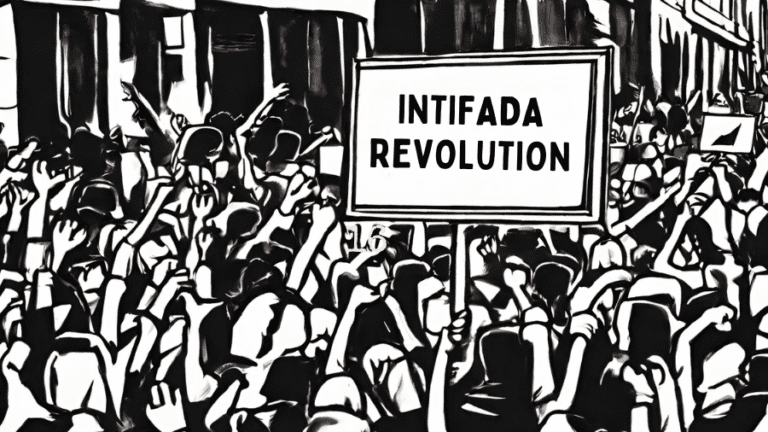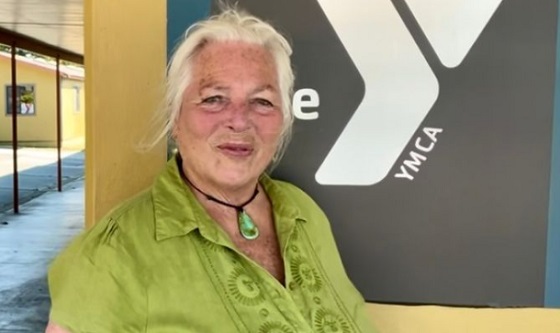International
Globalizing intifada is the same as globalizing jihad: Hussain Ehsani

From the MacDonald Laurier Institute
By Hussain Ehsani
Canadian authorities must realize that calls for “intifada” constitute hate and even potentially an incitement to violence
When ISIS conducted its terrorist attacks on Mosul, Iraq in June 2014, several Mosul residents celebrated it as a victory for the terror group and welcomed them to the city. In March 2019, ISIS was defeated in a fight with Kurdish special units Peshmerga, Iraqi Forces, and the international coalition, and this time, five years later, Mosul celebrated the defeat of ISIS. Mosul had learned its lesson under ISIS’ reign of terror. Likewise, the fantasy of celebrating Islamic Jihadist and terrorist groups as liberators has disappeared, for the most part, across the Middle East.
However, the same cannot be said about the veneration of terror in the West. Less than 24 hours after the brutal October 7 terrorist attacks by Hamas on civilians and the Jewish state, Canada witnessed horrific and unimaginable scenes. People across the country paraded with Palestinian flags, chanting “Allah Akbar,” “Free Palestine,” “From the river to the sea, Palestine will be free,” and “Long live Intifada” — celebrating the Hamas attack that resulted in the murder of 1,200 Israelis. The scenes reminded me of Mosul’s celebration of ISIS’ victory in 2014, but this time they took place in in Mississauga, Ontario.
As Israel began its counter-terror operation the mobs became more aggressive – organizing rallies across the country, blocking intersections, threatening Jewish Businesses, attacking synagogues with guns and Molotov cocktails, and issuing bomb threat against the largest Jewish high school in Canada.
Although Hamas, Palestinian Islamic Jihad (PIJ), and the Popular Front for the Liberation of Palestine (PFLP) are listed as terrorist organizations by the Government of Canada, these groups are being praised by the pro-Jihadi mobs. They have flown the flag Hamas and the PFLP, they have worn green headbands representing Hamas, and yellow armbands of PIJ. Some in Toronto even raised the flag of the Taliban. Others have worn jackets with the symbols of Jihad, martyrs, and Al Qaeda symbols during protests. All while they scream “Intifada, intifada, long live the intifada,” “Globalize the intifada,” and “There is only one solution, intifada, revolution” – unmistakable calls for violence against Jews that refer to the bloody Palestinian terror campaigns of the late 80s and early 2000s.
Despite the clear connection between the terror groups and this violent call, law enforcement across the country have been reluctant to act and make arrests on those shouting “Intifada.” This refusal encourages the pro Hamas mobs to continue their antisemitic rallies and disguises calling for violence as a progressive solution for the Palestinian cause.
There is no doubt that calling for intifada is calling for violence. This is most clearly demonstrated by the Second Palestinian Intifada which consisted of suicide bombings, shootings, stabbings, and other terror tactics. These tactics have been used by other major Islamic Jihadist groups such as the Taliban, ISIS, and Al Qaeda. In April 1993, during the first Intifada, Hamas suicide bomber Saher Tamam Al Nablusi detonated the switch under the seats in his car and blew himself up on the West Bank. Based on the result of this attack, Hamas and its allies kicked off massive campaign of suicide attacks up against Israel. According to the statistics of Israeli institutions and studies, during two phases of Intifada, Hamas, PIJ, and PFLP conducted more than 130 suicide attacks. In the aftermath of the Intifada, the tactic of car bombs was vastly used by the Haqqani network in Afghanistan, Al Qaeda in Iraq, the Taliban in Afghanistan, and ISIS in Iraq and Syria.
And Intifada is not restricted to terror attacks but includes a clear strategy undergirded by religious ideology. For example, the book “Palestinian Resistance against Israel in Jerusalem” lays out the rhetoric and chants that Palestinians shouted in protests during the first Intifada, including: “Khaybar Khaybar O Jewish! The Mohammad Army will come back.” This chant refers to the Battle of Khaybar in which Muslims fought against the Jews in the first era of Islam in the Khaybar district of Medina in Hejaz in early 628 CE, which led to the victory of Muslims. “Mohammad Army” in this context is a metaphor for all Muslims around the world, and the chant is calling all Muslims to assemble another Khyabar, which strives to provoke and unite all Muslims against Jews. Another example “Praise the God O Muslim – explode the head of Zionist.” This chant was yelled in Toronto, Ontario. This has no other meaning except Jihad and the militarization of Muslims around the world to eliminate Jews and Israelis.
Hamas, Palestinian Islamic Jihad, and their allies are utilizing Jihadi tactics to pursue their objectives here in Canada. Calling for “Intifada” in the streets, malls, subway stations, and university campuses in Canada is a direct call for Jihadism and its principles to be enacted in the West. This is why the globalization of Intifada means globalizing the Jihad. It means globalizing violence against Jews.
Canadian authorities should realize that calls for “intifada” constitute hate and even potentially an incitement to violence. If they fail to, it will not be long until we see ISIS flags and chants for reviving the Caliphate. They are one and the same and we cannot allow this hate to fester unaddressed.
Hussain Ehsani is a Middle East affairs expert focused on the Abraham Accords and Canadian foreign policy.
Banks
Welcome Back, Wells Fargo!

 Racket News
Racket News
By Eric Salzman
The heavyweight champion of financial crime gets seemingly its millionth chance to show it’s reformed
The past two decades have been tough ones for Wells Fargo and the many victims of its sprawling crime wave. While the banking industry is full of scammers, Wells took turning time honored street-hustles into multi-billion dollar white-collar hustles to a new level.
The Federal Reserve announced last month that Wells Fargo is no longer subject to the asset growth restriction the Fed finally enforced in 2018 after multiple scandals. This was a major enforcement action that prohibited Wells from growing existing loan portfolios, purchasing other bank branches or entering into any new activities that would result in their asset base growing.
Upon hearing the news that Wells was being released from the Fed’s penalty box, my mind turned to this pivotal moment in the classic movie “Slapshot.”
Here are some of Wells Fargo’s lowlights both before and after the Fed’s enforcement action:
- December 2022: Wells Fargo paid more than $2 billion to consumers and $1.7 billion in civil penalties after the Consumer Financial Protection Bureau (CFPB) found mismanagement — including illegal fees and interest charges — in several of its biggest product lines, such as auto loans, mortgages, and deposit accounts.
- September 2021: Wells Fargo paid $72.6 million to the Justice Department for overcharging foreign exchange customers from 2010-2017.
- February 2020: Wells Fargo paid $3 billion to settle criminal and civil investigations by the Justice Department and SEC into its aggressive sales practices between 2002 and 2016. About $500 million was eventually distributed to investors.
- January 2020: The Office of the Comptroller of the Currency (OCC) banned two senior executives, former CEO John Stumpf and ex-Head of Community Bank Carrie Tolstedt, from the banking industry. Stumpf and Tolstedt also incurred civil penalties of $17.5 million and $17 million.
- August 2018: The Justice Department levied a $2.09 billion fine on Wells Fargo for its actions during the subprime mortgage crisis, particularly its mortgage lending practices between 2005 and 2007.
- April 2018: Federal regulators at the CFPB and OCC examined Wells’ auto loan insurance and mortgage lending practices and ordered the bank to pay $1 billion in damages.
- February 2018: The aforementioned Fed enforcement action. In addition to the asset growth restriction, Wells was ordered to replace three directors.
- October 2017: Wells Fargo admitted wrongdoing after 110,000 clients were fined for missing a mortgage payment deadline — delays for which the bank was ultimately deemed at fault.
- July 2017: As many as 570,000 Wells Fargo customers were wrongly charged for auto insurance on car loans after the bank failed to verify whether those customers already had existing insurance. As a result, up to 20,000 customers may have defaulted on car loans.
- September 2016: Wells Fargo acknowledged its employees had created 1.5 million deposit accounts and 565,000 credit card accounts between 2002 and 2016 that “may not have been authorized by consumers,” according to CFPB. As a result, the lender was forced to pay $185 million in damages to the CFPB, OCC, and City and County of Los Angeles.
Additionally, somehow in 2023 Wells even managed to drop $1 billion in a civil settlement with shareholders for overstating their progress in complying with their 2018 agreement with the Fed to clean themselves up!
I imagine if Wells were in any other business, it wouldn’t be allowed to continue. But Wells is part of the “Too Big to Fail” club. Taking away its federal banking charter would be too disruptive for the financial markets, so instead they got what ended up being a seven-year growth ban. Not exactly rough justice.
While not the biggest settlement, my favorite Wells scam was the 2021 settlement of the seven-year pilfering operation, ripping off corporate customers’ foreign exchange transactions.
Like many banks, Wells Fargo offers its corporate clients with global operations foreign exchange (FX) services. For example, if a company is based in the U.S. but has extensive dealings in Canada, it may receive payments in Canadian dollars (CAD) that need to be exchanged for U.S. dollars (USD) and vice versa. Wells, like many banks, has foreign exchange specialists who do these conversions. Ideally, the banks optimize their clients’ revenue and decrease risk, in return for a markup fee, or “spread.”
There’s a lot of trust involved with this activity as the corporate customers generally have little idea where FX is trading minute by minute, nor do they know what time of day the actual orders for FX transactions — commonly called “BSwifts” — come in. For an unscrupulous bank, it’s a license to steal, which is exactly what Wells did.
According to the complaint, Wells regularly marked up transactions at higher spreads than what was agreed upon. This was just one of the variety of naughty schemes Wells used to clobber their customers. My two favorites were “The Big Figure Trick” and the “BSwift Pinata.”
The Big Figure Trick
Let’s say a client needs to sell USD for CAD, and that the $1 USD is worth $1.32 CAD. In banking parlance, the 32 cents is called the “Big Figure.” Wells would buy the CAD at $1.32 for $1 USD and then transpose the actual exchange rate on the customer statement from $1.32 to $1.23. If the customer didn’t notice, Wells would pocket the difference. On a transaction where the client is buying 5 million CAD with USD, the ill-gotten gain for Wells would be about $277,000 USD!
Conversely, if the customer did notice the difference, Wells would just blame it on the grunts in its operational back office, saying they accidentally transposed the number and “correct” the transaction. From the complaint, here is some give and take between two Wells FX specialists:
“You can play the transposition error game if you get called out.” Another FX sales specialist noted to a colleague about a previous transaction that a customer “didn’t flinch at the big fig the other day. Want to take a bit more?”
The BSwift Piñata
The way this hustle would work is, let’s say the Wells corporate customer was receiving payment from one of their Canadian clients. The Canadian client’s bank would send a BSwift message to Wells. The Wells client was in the dark about the U.S. dollar-Canadian dollar exchange rate because it had no idea what time of day the message arrived. Wells took advantage of that by purchasing U.S. dollars for Canadian dollars first. For simplicity, think of the U.S. dollar-Canadian dollar exchange rate as a widget that Wells bought for $1. If the widget increased in value, say to $1.10 during the day, Wells would sell the widget they purchased for $1 to the client for $1.10 and pocket 10 cents. If the price of the widget Wells bought for $1 fell to 95 cents, Wells would just give up their $1 purchase to the client, plus whatever markup they agreed to.
Heads, Wells wins. Tails, client loses.
The complaint notes that a Wells FX specialist wrote that he:
“Bumped spreads up a pinch,” that “these clients who are in the mode of just processing wires will most likely not notice this slight change in pricing” and that it “could have a very quick positive impact on revenue without a lot of risk.”
Talk about a boiler room operation. Personally, I think calling what you are doing to a client a “piñata” should have easily put Wells in the Fed’s penalty box another 5 years at least!
Wells has been released from the Fed’s 2018 enforcement order. I would like to think they have learned their lesson and are reformed, but I would lay good odds against it. A leopard can’t change its spots.
Racket News is a reader-supported publication.
Consider becoming a free or paid subscriber.
International
Woman wins settlement after YMCA banned her for complaining about man in girls’ locker room

From LifeSiteNews
Julie Jaman will receive $65,000 as part of the settlement after being banned from a local swimming pool for objecting to a man in a female shower with little girls present
A Washington State grandmother won a $65,000 settlement from the City of Port Townsend and the Olympic Peninsula YMCA after she was banned from a swimming pool for objecting to a cross-dressing man watching small girls change clothes.
As covered by LifeSiteNews in 2022, Julie Jaman testified before the Port Townsend City Council about her experience showering in the local pool’s facilities when she heard “a man’s voice in the women’s dressing area.” When she investigated, she said that she saw “a man in a women’s swimsuit, watching little girls pull down their bathing suits in order to use the toilets in the dressing room.”
She also told a local newspaper, “There were gaps in the curtain and there I was, naked, with soap and water on me, and this guy, right there very close to me. I asked, ‘Do you have a penis?’ He said, ‘That’s none of your business.’ That’s when I told him, ‘Get out of here, right now.” She appealed to a nearby female manager, who she says replied, “you’re discriminating and you can’t use the pool anymore and I’m calling the police.”
After speaking to police and reviewing police reports, the Port Townsend FreePress reported that Jaman had an “emotional response to a strange male being in the bathroom and helping a young girl take off her bathing suit,” and was described as “screaming” by a complainant.
“In an effort by the city and the YMCA to apply the neo-cultural gender rules at Mountain View Pool dressing, shower room facilities, women and children are being put at risk,” Jaman declared at the time.
A YMCA marketing and communications manager responded at the time by disputing her version of events, claiming the male was not “engaging” with the young girls but was simply escorting them to the dressing room, and that the confrontation was just one in a series of many that led to her ban.
She sued, however, and on June 30 the group representing her, the Center for American Liberty (CAL), announced that the city and the YMCA chapter had agreed to a $65,000 settlement, which also provides that the city will “remove certain information about Ms. Jaman from its website, further underscoring the baselessness of the actions taken against her.”
“This case was never just about one woman being banned from a publicly owned pool, it was about the fundamental right of every American to speak truth without fear of retaliation,” said Mark Trammell, CEO of CAL. “Julie Jaman bravely stood her ground, endured attacks on her character, and today’s settlement affirms that government officials cannot silence dissenting voices through intimidation or retribution.”
“I never imagined that expressing concerns about the safety and privacy of women and girls would lead to me being shunned and banned,” Jaman added. “I’m grateful that justice has been served and that my voice was heard. This is a victory for common sense, women’s rights, and the right to speak the truth.”
Despite being demanded by LGBT activists as a matter of “fairness,” policies forcing girls to share intimate facilities such as bathrooms, showers, or changing areas with males who “identify” as the opposite sex violates their privacy rights, subjects them to needless emotional stress, and gives potential male predators a viable pretext to enter female bathrooms or lockers by simply claiming transgender status.
-

 Business2 days ago
Business2 days agoElon Musk slams Trump’s ‘Big Beautiful Bill,’ calls for new political party
-

 Business2 days ago
Business2 days agoRFK Jr. says Hep B vaccine is linked to 1,135% higher autism rate
-

 MxM News18 hours ago
MxM News18 hours agoUPenn strips Lia Thomas of women’s swimming titles after Title IX investigation
-

 Crime16 hours ago
Crime16 hours agoBryan Kohberger avoids death penalty in brutal killing of four Idaho students
-

 Censorship Industrial Complex2 days ago
Censorship Industrial Complex2 days agoGlobal media alliance colluded with foreign nations to crush free speech in America: House report
-

 International1 day ago
International1 day agoCBS settles with Trump over doctored 60 Minutes Harris interview
-

 Business18 hours ago
Business18 hours agoWhy it’s time to repeal the oil tanker ban on B.C.’s north coast
-

 Alberta18 hours ago
Alberta18 hours agoPierre Poilievre – Per Capita, Hardisty, Alberta Is the Most Important Little Town In Canada







